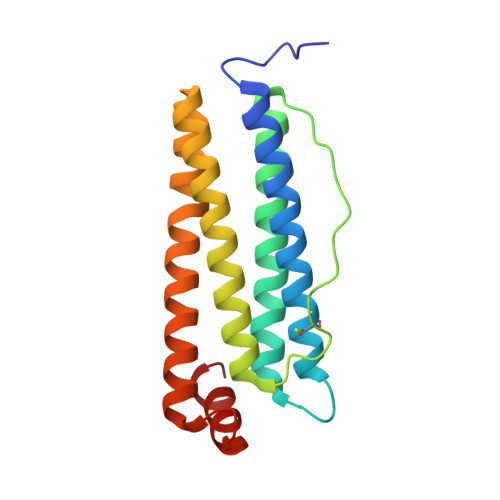Super-resolution fluorescence imaging of cryosamples does not limit achievable resolution in cryoEM.
Last, M.G.F., Noteborn, W.E.M., Voortman, L.M., Sharp, T.H.(2023) J Struct Biol 215: 108040-108040
- PubMed: 37918761
- DOI: https://doi.org/10.1016/j.jsb.2023.108040
- Primary Citation of Related Structures:
8CPM, 8CPS, 8CPT, 8CPU, 8CPV, 8CPW, 8CPX - PubMed Abstract:
Correlated super-resolution cryo-fluorescence and cryo-electron microscopy (cryoEM) has been gaining popularity as a method to investigate biological samples with high resolution and specificity. A concern in this combined method (called SR-cryoCLEM), however, is whether and how fluorescence imaging prior to cryoEM acquisition is detrimental to sample integrity. In this report, we investigated the effect of high-dose laser light (405, 488, and 561 nm) irradiation on apoferritin samples prepared for cryoEM with excitation wavelengths commonly used in fluorescence microscopy, and compared these samples to controls that were kept in the dark. We found that laser illumination, of equal duration and intensity as used in cryo-single molecule localization microscopy (cryoSMLM) and in the presence of high concentrations of fluorescent protein, did not affect the achievable resolution in cryoEM, with final reconstructions reaching resolutions of ∼ 1.8 Å regardless of the laser illumination. The finding that super-resolution fluorescence imaging of cryosamples prior to cryoEM data acquisition does not limit the achievable resolution suggests that super-resolution cryo-fluorescence microscopy and in situ structural biology using cryoEM are entirely compatible.
- Department of Cell and Chemical Biology, Leiden University Medical Centre, 2300 RC Leiden, The Netherlands.
Organizational Affiliation:



















